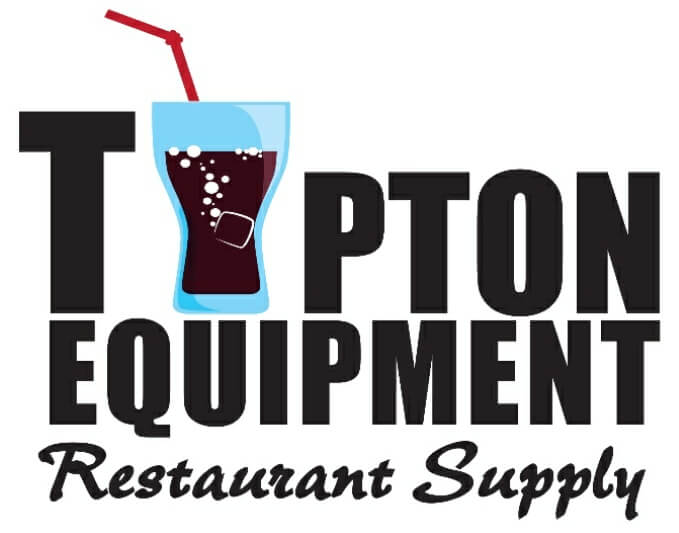Tips to Clean Cooking Equipment: Commercial Oven
June 20, 2019After having purchased your commercial oven, you’ll want to make sure that you maintain it in good condition to prevent costly repairs.
Always read the owner’s manual of your oven for the specifics on how to properly maintain the oven, but also, don’t be shy about approaching your supplier with questions about your new cooking equipment. Most suppliers are happy to offer post-purchase information as they have an intimate knowledge of the products they sell and have likely dealt with faulty, broken, and ill-maintained products in the past.
Spills
Wipe up spills inside the oven immediately. Acting fast will prevent the discharge from becoming baked on the surface of the cooking equipment and more difficult to remove later. The spill can also affect cooking temperatures.
Interior
Clean the oven interior every day. Generally, commercial ovens can be cleaned with a mild detergent soap, check your owner’s manual for its recommendations. Soak oven racks in a sink while wiping out the oven interior. Clean and rinse the trays before reinserting them in the oven.
Exterior
Once a week, clean the surface of the commercial oven. Use a mild soap and a soft bristle brush to clean stainless-steel finishes. Abrasive cleansers and scrubs can damage the finish and cause the exterior of the cooking equipment to corrode.
Perform a deep cleaning each month. Check your owner’s manual for recommended cleaning chemicals for your commercial oven.
Cleaning Your Commercial Oven
The first thing to do is check to make sure the commercial oven is off. If it is off, you should be sure to check that it has been apart long enough for the inside of the oven to be cool enough to touch. If they are, you must first take the racks out of the cooking equipment. These will be washed separately and will only get in the way when you are cleaning the inside of the oven.
Next, you should spray the inside of the oven with cleaner. All surfaces of the ovens should get sprayed. Include all sides, the top, the bottom, the inside of the oven door, and even the coils. The oven cleaner that you have will have its instructions for how long it should set, so be sure to read the directions and follow them. While the oven cleaner sets in the oven, you can use warm soapy water to clean off the racks. Once the oven cleaner has set for the correct amount of time, you should wipe the soap off using the old and then put the trays back in the oven. As a finishing touch, you can use a damp towel to wipe off the outside of the oven, and then you are finished.
It’s best not to let your commercial oven or any cooking equipment that is used regularly go without daily cleaning.
What’s in a Cooking Pot, How to Choose the Right One?
As a restaurant owner, your cooking needs might vary. Did you know that a good quality pot can greatly improve your cooking experience, while also improving the quality of your cooking? This cooking equipment is a very important one that cannot be done away with...
5 Things Every Restaurant Owner Should Do Before Buying Used Kitchen Equipment
Equipping your restaurant properly can cost a lot of money, so buying used kitchen equipment is the go-to choice for many restaurateurs. Buying used kitchen equipment for a restaurant is a bit different than buying used equipment for your home, however. You will...
Top Restaurant Technology Trends in 2018
When looking to buy restaurant supplies, you want to be on the leading edge of technology trends. This will keep your kitchen running smoothly. Let’s take a look at some of the most recent trends in restaurant supplies technology. 1. New Payment Options Who would...
5 Different Ice Shapes and Why You Should Care About Them
Ice makers are very popular in the restaurant and foodservice community because they eliminate the need to buy ice every day. And of course, adding an ice maker to your collection of foodservice equipment means you will always have ice on hand when you need it. An...
Pulping and Grinding: A Starter’s Guide to Reducing Commercial Food Waste Costs
For most restaurant owners and managers, the expenses involved in making meals are always under careful consideration. Water is needed to prepare, cook and wash food; power is necessary for food prep, cooking and cooling, and so on. However, how many of us consider...
Choosing the Right Milk Cooler: Cold Wall or Forced Air?
In a restaurant, milk is an essential to have on hand for coffee and other café-style beverages, for serving with kids’ meals, and as a key ingredient in many recipes. Keeping your milk properly chilled can be difficult without the proper restaurant equipment....
How to Choose Your Next Commercial Meat Smoker
The movies that connect with us on a personal level are the ones that linger in our memories forever. Anyone who has used a commercial meat smoker knows that they have a huge influence on the taste of a meal. You need to have just the right kitchen equipment to get a...
Are High Speed Ovens Too Good to be True?
You might have heard a few of the bold claims that foodservice equipment manufacturers have been making about high speed ovens, but they can’t be possible, right? Cooking three times as faster as regular ovens? Five times as fast? Fifteen times as fast? It may seem...
Choosing the Right Food Storage Containers for Your Restaurant
Choosing the right kitchen supplies will make a difference in your restaurant. Whether it is heavy duty kitchen equipment or food storage containers, each piece of equipment plays its own important role. Today, we are going to talk about how to choose the right food...
Tipton’s Guide to Perfect Poultry Trussing
Do you ever truss birds in your commercial kitchen? Trussing is a fantastic cooking technique because it makes poultry cook faster, look more attractive and taste better. If your commercial kitchen prepares poultry, you don’t want to miss these trussing tips. Trussing...
How to Eliminate Excess Condensation in Your Kitchen
Is your commercial kitchen getting steamy? If so, you could have more than just an uncomfortable working environment on your hands. Excess moisture in your commercial kitchen can result in the corrosion of equipment, the development of mold, and even damage to your...
The DIY Guide to Your Restaurant’s Own Garden
Stocking your restaurant supply with your own home-grown herbs and produce can truly bring your dishes to life. When it comes to food, everyone knows there’s nothing like homemade and home-grown. Having your own culinary garden, however large or small, can help you...
5 Reasons a Meat Grinder Will Set Your Burgers Apart
The more you do to prepare your foods in-house with the right kitchen equipment, the fresher and more flavorful your dishes become. There are all sorts of restaurants offering fast-food style burgers, but some diners are looking for the real deal. A fresh, juicy...
Pest Preventions to Implement in Your Commercial Kitchen
Restaurant pests: it’s something that few people want to think about. Like it or not, pest management is an essential consideration for every commercial kitchen. Offering food, shelter and water, the unprepared commercial kitchen naturally provides everything pests...
Choosing the Right Material for Your Cooking Equipment
Kitchens are very unique to their chef. Just like a car mechanic has a toolbox unique to them, so is the cooking equipment in a kitchen. And over time, the same cooking equipment become a natural extension of the chef. What tools are you using in your kitchen? It...















